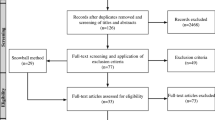Abstract
The technologies that pervade domestic spaces mainly focus on utility and efficiency. They also become ever more so immaterial and non-spatial, concentrated on tiny “magic” devices concealed inside the environment, or dispersed into invisible networks. Yet, they fail to create a strong feeling of place that is intimate and reflects our identity, relations and domestic history. In this paper I am presenting a proposal for a spatial system that organizes the positions of a new type of electronic object inside the two disparate homes of a couple living apart, in order to produce a kind of intimate communication between them. The resulting architectural space is an imaginary merge of the two homes, but where real locations in each house correspond to trans-located presences of the other person/space. The system is based on simple ubiquitous technologies and the intimate relationship of the couple. I am also presenting here the attempt to implement some of the objects and to carry out a concept evaluation with potential users in order to test its validity and to highlight important issues or concerns.

















Similar content being viewed by others
Notes
Examples of such projects are: (a) House_n, developed in MIT Medialab, MA, USA and (b) comHOME, a concept dwelling that was developed by the Interactive Institute in Stockholm
Donna Haraway, Cyborg Manifesto, included in her book[5]
One characteristic text in recent architecture theory of that kind is [7]
for example: (a) Remote Home, Tobi Schneidler, Magnus Jonsson, Interactive Institute, Stockholm, (b) Adaptive House, Michael C. Mozer, Georgia-Tech, (c) bed communication, MIT, Media Lab
In fact, as it was shown in the concept evaluation, any location within the house can be used as a point of reference for the merge of the two plans.
References
Bergson H (1991) Matter and memory. Zone Books, New York
Cooper Marcus C (1997) House as a mirror of self. Conari Press, Berkeley
Dunne A, Raby F (2001) Design noir: The secret lives of objects. Birkhaüser, London
Hall Edward T (1966) The hidden dimension. Anchor Books, New York
Haraway Donna J (1991) Simians, cyborgs, and women: the reinvention of nature. Free Association Books, London
Ihde D (2002) Bodies in technology. University of Minnesota Press, Minnesota-London
Lynn G (1998) Folds, blobs and bodies. La Lettre Vollé, Belgium
McCullough M (1996) Abstracting craft: the practiced digital hand. The MIT Press, Cambridge
Rilley T (eds) (1999) The un-private house. Museum of Modern Art, New York
Author information
Authors and Affiliations
Corresponding author
Rights and permissions
About this article
Cite this article
Grivas, K. Digital Selves: Devices for intimate communications between homes. Pers Ubiquit Comput 10, 66–76 (2006). https://doi.org/10.1007/s00779-005-0003-1
Received:
Accepted:
Published:
Issue Date:
DOI: https://doi.org/10.1007/s00779-005-0003-1




